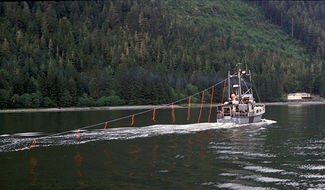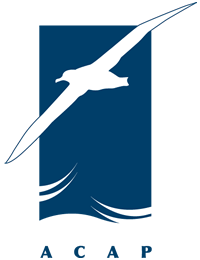The Inter-American Tropical Tuna Commission (IATTC) held its 89th Meeting in Guayaquil, Ecuador from 22 June to 03 July 2015. Dr Marco Favero, Chair of the ACAP Advisory Committee, represented the Agreement. In coordination with the ACAP agenda and seabird matters, Dr Esteban Frere represented BirdLife International at the meeting.
In 2011 at its 82nd Meeting, the IATTC adopted Resolution C-11-02 entitled “Resolution to mitigate the impact on seabirds of fishing for species covered by the IATTC”. This conservation measure, which is currently in place, requires vessels of more than 20 metres in length that fish within the application area to use at least two of the mitigation measures from a two-column table
C-11-02, along with another on observer coverage, certainly addresses seabird bycatch by eastern Pacific longline fishing vessels. However, the resolution is now considered to be out-dated, requiring further amendments in order to (1) reflect the best-practice advice developed by the Agreement’s Seabird Bycatch Working Group, as well as (2) to be in line with conservation measures adopted by other tuna regional fisheries management organizations (tRFMOs), in particular the Western and Central Pacific Fisheries Commission (WCPFC).
At the 89th IATTC Commission Meeting the United States of America tabled a revised seabird conservation measure in line with that (CM 2012-07) adopted by the WCPFC in 2012. The USA text with two separate application areas proposed for southern areas the simultaneous use of at least two of three measures (weighted branch lines, night setting and bird-scaring lines), whereas for northern areas proposed the use of at least two of the mitigation measures in a menu of options.

A bird-scaring line is deployed behind a Pacific longliner, photograph by Ed Melvin
Although not fully in line with ACAP best-practice advice, in particular for mitigation proposed for waters north of 23°N, the adoption of such a text would have implied significant progress compared to the seabird resolution currently in place. Regrettably, discussions on technical specifications and further discrepancies in the views regarding the application areas in the proposed text delayed consideration of the USA proposal at the meeting and finally prevented the adoption of a revised resolution.
ACAP is committed to continue the work with IATTC Parties in order to contribute to the further refinement of the proposal, and it looks forward to the final adoption of a seabird measure that incorporates the latest knowledge in mitigating seabird bycatch by fisheries.
Read an earlier posting on the IATTC’s 89th Meeting here.
Marco Favero, Chair, ACAP Advisory Committee, 10 August 2015

 English
English  Français
Français  Español
Español